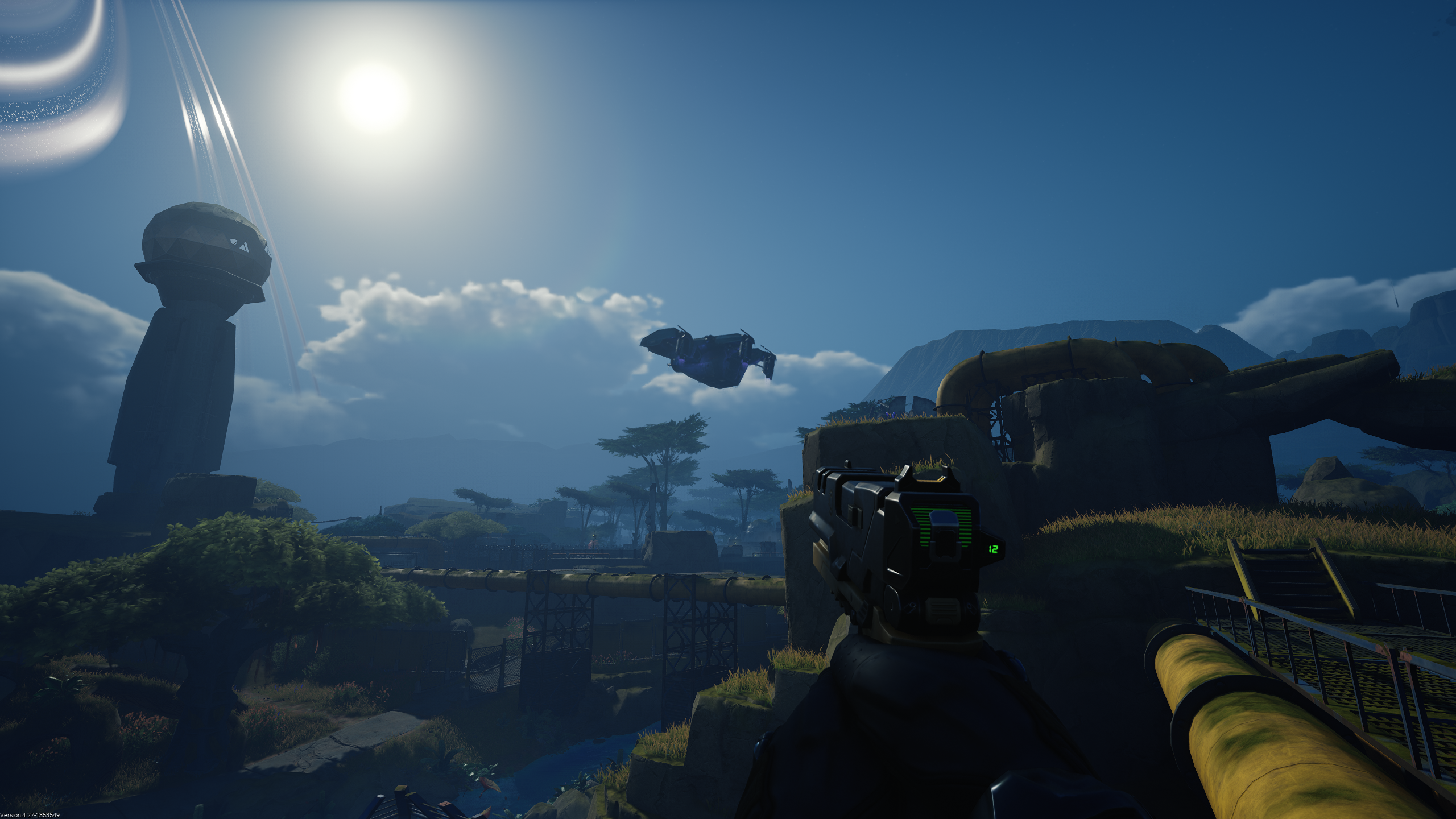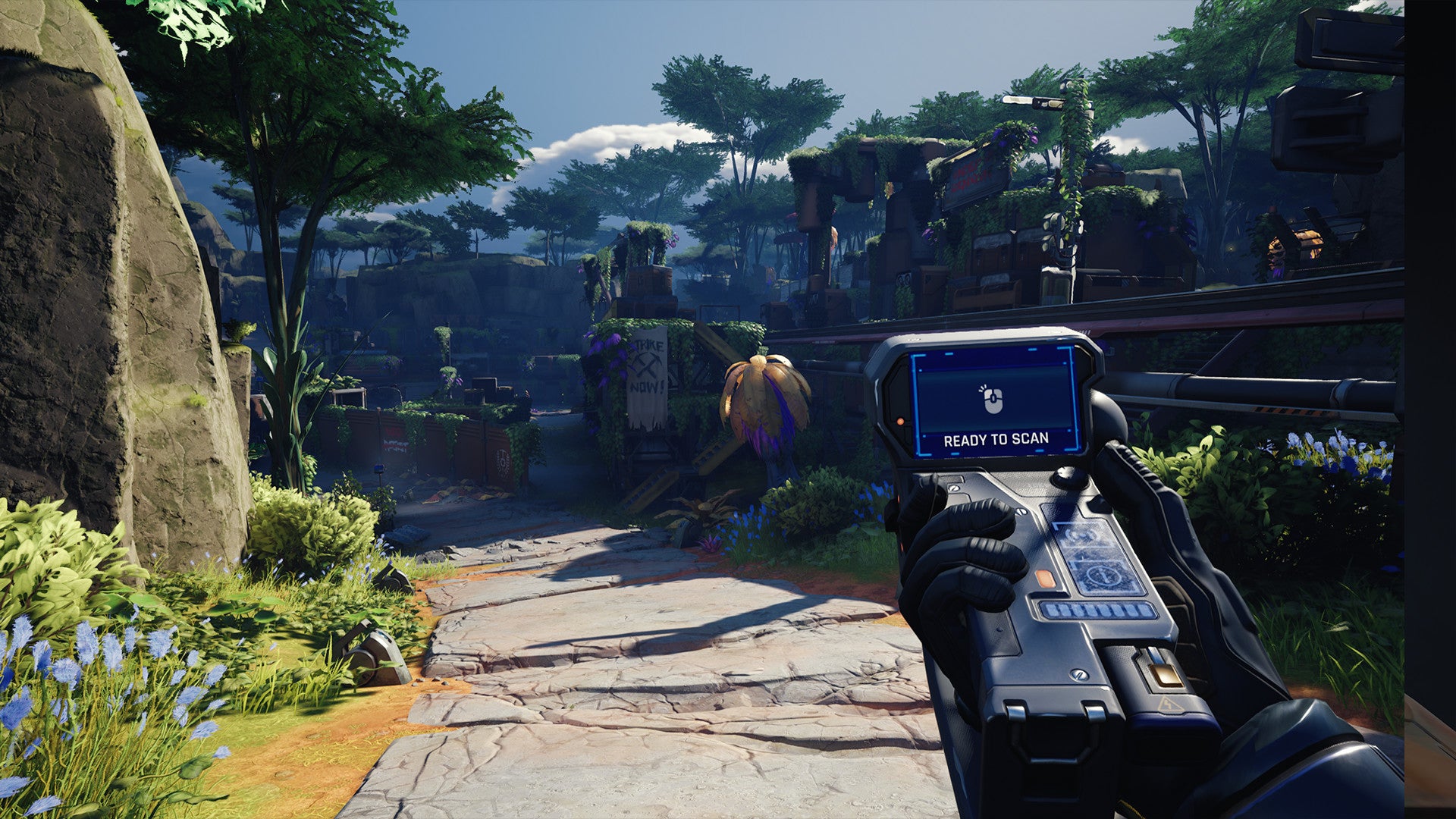Now that all the unusually stressful benchmarking is out the way, let’s talk how mineral-grubbing “quest shooter” The Cycle: Frontier performs on PC. Short version: pretty well! It can make do with older and lower-end hardware at 1080p, and scales nicely all the way up to 4K and ultrawide resolutions, taking full advantage of the best graphics cards or the best gaming monitors with high refresh rates. If your rig is only just scraping past the system requirements, there are also some chunky performance improvements available via the right graphics settings tweaks.
That’s in spite of The Cycle: Frontier going fairly light on visual customisation options, with only six individual quality settings and four presets. It does support DLSS, so Nvidia RTX owners can employ upscaling for even more frames per second, though AMD’s rival FidelityFX Super Resolution (FSR) is absent entirely.
Still, smooth performance should be attainable on all but the most decrepit of PC setups. Read on for the full deets on how The Cycle: Frontier runs, and the best settings to give yourself a boost.
The Cycle: Frontier system requirements and PC performance
Yager’s minimum and recommended PC specs shouldn’t be too hard to meet, with the latter only asking for 8GB of RAM and years-old CPUs and GPUs. The minimum spec supposedly goes for 30fps at 1080p, the latter for 60fps.
The Cycle: Frontier minimum PC specs
- OS – Windows 10 (64-bit)
- CPU – Intel Core i5-4590 / AMD Ryzen 3 1200
- GPU – Nvidia GeForce GTX 760 / AMD Radeon R9 270; 2GB VRAM
- RAM – 6GB
- Storage – 37GB
The Cycle: Frontier recommended PC specs
- OS – Windows 10 (64-bit)
- CPU – Intel Core i5-6600 / AMD Ryzen 5 1400
- GPU – Nvidia GeForce GTX 970 / AMD Radeon RX 570; 4GB VRAM
- RAM – 8GB
- Storage – 37GB
In practice, the recommended-tier RX 570 needs a little help to stay above 60fps consistently – I was using it with a Core i5-11600K and 16GB of RAM, both well above the listed specs, and at the highest ‘Epic’ graphics preset it averaged 38fps at 1920×1080. Dropping to the Medium preset (more on these below) jolted it up to a much slicker 67fps.
In fairness, the RX 570 was a lower-end card when it was new, and that was two GPU generations ago. The more contemporary GeForce RTX 3070 averaged 84fps at 4K/Epic quality even without upscaling, and with DLSS on its Balanced setting, that rose to 100fps. The same settings combination also produced 122fps at 1440p, not that you’d need a £600 card for this resolution – I tried the RX 570 at 2560×1440 as well, and it could get a playable 44fps out of the Medium preset.
Ultrawide resolutions like 3440×1440 will obviously be more taxing, though The Cycle: Frontier does adapt well to wider aspect ratios. For the playable bits, anyway – loading screens and the intro cutscene stick to standard widescreen, but the in-game UI is shuffled around appropriately in ultrawide, and there’s no unsightly stretching.

I didn’t encounter any egregious performance problems either – just a couple of oddities with certain settings. I’m a little suspicious of DLSS’ Ultra Quality setting, for instance: it’s meant to render at a higher resolution than the Quality setting, but performs on par with the Balanced setting, suggesting it’s actually rendering at a lower resolution. Hmm. All three look extremely similar once upscaling is applied, though, so if this is a bug it’s hardly the game-ruining kind.
The Cycle: Frontier’s “experimental” DirectX 12 rendering option also gave me mixed results. On the RTX 3070, it worked fine – albeit with an FPS gain too small to notice – whereas on the RX 570, DX12 actually cut average performance by 10%. I’d stick with DirectX 11, especially on weaker hardware, until Yager have given this feature a good polish.

The Cycle: Frontier best settings guide
Although The Cycle: Frontier keeps its graphical options succinct, it does have all the creature comforts of a well-crafted PC game: capped and uncapped frame rate options, an FOV slider, the aforementioned ultrawide support and the like. Besides, it’s still quite easy to bump up your frame rate by skipping the presets (and auto-detect option) to make some manual adjustments.
I mainly tested these settings with the RX 570, except for DLSS, which needed an RTX card like my RTX 3070. Running at 1080p, the former GPU averaged 38fps on the Epic preset, 55fps on High, 67fps on Medium and 75fps on Low.
As you can see from these comparison shots, the most noticeable differences between each preset tend to be how much grass and moss gets trimmed away; though Medium having more abundant shadows gives it a distinct advantage over Low. Here’s how all six of the main individual quality options affected performance on the cheap Radeon GPU, using the Epic preset as a starting point:
Draw distance: Lowering this from Epic to Medium improved performance by about 8%. That translates into a 3fps gain on the RX 570, which doesn’t sound like much, but is worth a lot more when you’re working with low frame rates than it would be if you were already pulling triple digits.
Shadow quality: Dropping to Medium yielded a thick, juicy 26% speed boost – the biggest of all six settings. If your own PC is struggling, prioritise a lower shadows setting for sure.
Post process quality: On the other hand, there are settings like this, which don’t seem to improve performance at all. I didn’t get a single extra frame per second, on average, after dropping post processing from Epic to Medium.
Texture quality: Again, lowering this to Medium didn’t help with FPS at all, but then the visible difference between this and Epic is negligible as well.
Visual effects quality: Medium quality effects added 8% performance over Epic, so this could be another one to drop, especially in tandem with other settings.
Foliage quality: Despite lower settings breaking out the lawnmower, changing this from Epic to Medium only improved he RX 570’s performance by 5% – a 2fps gain.
That’s it for the main settings, though you can also toggle motion blur on and off – all the results above are with it off, and switching it on reduced Epic preset performance by 5%. I’d keep it off. Be sure to make sure the ‘Enable multi threaded rendering’ option is on as well; it should be by default.
As for The Cycle: Frontier’s best settings combination, normally I’d suggest sticking with as many maxed-out settings as possible, and only toning down the few most impactful individual settings. Here, though, the High preset performs so much better than Epic on the RX 570 that it’s arguably worth setting most graphics options to High, with Shadows, Draw distance, and visual effects on Medium. With these punched in, the RX 570 could average 66fps – almost as fast as the whole-hog Medium preset, but with the slightly superior detail and fidelity of some High settings. Not to mention a honking 74% performance upgrade over Epic quality.
Provided your graphics cards supports it, DLSS is a huge help at 1440p and 4K as well. Even with all settings on Epic, Balanced-level DLSS improved the RTX 3070’s performance by 19% at 4K and 30% at 1440p.
If you’re looking for tips of a more “How do I not die?” nature, Ollie’s The Cycle: Frontier beginner’s guide is full of prospecting advice.


